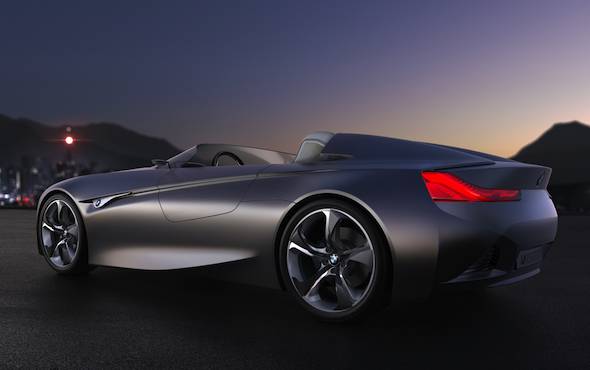BMW at Geneva – A Vision of the Future
The auto show season will hit full stride next week with the 81st annual Geneva Motor Show, generally conceded to be one of the year’s most important showcases for manufacturers to unveil new models and exploratory concept cars. As such, luxury and exotic sports car enthusiasts will once again pine with envy over the latest haute rides, or in some cases be horrified by design visions gone wrong. Either way, BMW appears to be the early favorite for the most intriguing concept study with its Vision ConnectedDrive, which was digitally previewed to the media last week.
As with the futuristic Vision EfficientDynamics concept car of two years ago, the Vision ConnectedDrive is less about revolutionary bodywork or a powerful new engine than a conceptual exploration of ergonomics, safety technologies, and emerging driver interfaces. Sure, the Vision ConnectedDrive looks pretty sweet, with specially designed bodywork wrapping a variation of the Z roadster. But it is the interior’s sophisticated technologies that prompted the concept, even though in reality, few of them actually yet exist.
What’s the good of a concept car with imaginary features, you may wonder? For decades manufacturers have rolled out concept cars that represent no more than an idea, in some cases ideas that have not even been remotely realized by contemporary technology. For example, in the 50s Studebaker unveiled a nuclear-powered flying saucer of sorts called the Astral that couldn’t even begin to do all it was imagined to. In fact, the Astral was basically just a life-sized model incapable of any kind of propulsion at all. The point is that by theorizing these ideas and giving them some form of packaging, automakers not only stimulate the popular imagination, but can begin to assess whether there is sufficient consumer demand for such products to prompt further research.
As in the case of the Astral, the Vision ConnectedDrive doesn’t begin to do half of what it is imagined to. To experience the futuristic features, which include a 3-D holographic instrument display that appears above the hood, Geneva attendees will have to watch an accompanying film that explains and depicts the various functions of the car. In addition to all traditional gauges appearing to holographically float in the air whilst accompanied by ancillary data relating to navigation, the Vision ConnectedDrive automatically syncs with the driver’s smart phone to act as a concierge that will suggest routes to calendar appointments, receive texts, and perform other digital networking functions. The car’s computer would also theoretically communicate with surrounding buildings to provide more detailed route information (like the specific businesses or history of a large office building). And when you’ve reached your destination, the Vision ConnectedDrive will actually park itself by communicating with the garage to find a spot. The concept car also promises to offer groundbreaking hypothetical safety features, such as an active emergency braking function that automatically senses potential collisions by communicating with other cars and then warns the driver by hitting the brakes.
Of course, as gloriously science fiction as it all sounds, these technologies could easily be more distracting than helpful, and potentially accident-causing rather than accident-preventing if improperly realized. Still, it’s nice to know that glimpses of the future are available in real products, not just fictitious digital interface depictions like the ones seen in films like Minority Report or The Day The Earth Stood Still. And even if the imaginary technologies don’t actually work quite yet, BMW would probably still have more than a few takers for the sleek roadster’s body. Now, if they could only give it a more manageable name…



















